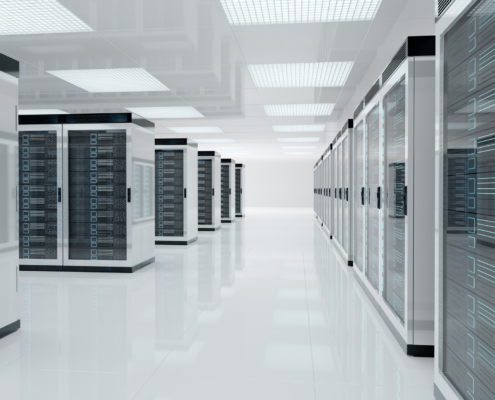 https://www.hilliardos.com/wp-content/uploads/2024/03/human-brain-on-technology-background-represent-artificial-intelligence.jpg
1250
2000
Abstrakt Marketing
/wp-content/uploads/2023/02/Hilliard-Logo-Color.png
Abstrakt Marketing2024-03-21 13:22:342024-07-26 16:56:46Understanding the Impact of AI on Cybersecurity
https://www.hilliardos.com/wp-content/uploads/2024/03/human-brain-on-technology-background-represent-artificial-intelligence.jpg
1250
2000
Abstrakt Marketing
/wp-content/uploads/2023/02/Hilliard-Logo-Color.png
Abstrakt Marketing2024-03-21 13:22:342024-07-26 16:56:46Understanding the Impact of AI on CybersecurityEnsuring Remote Work Security With Firewalls: A Comprehensive Guide
In the era of digital transformation and the rise in remote work, ensuring network security has become a paramount concern for businesses of all sizes. But how do we protect sensitive data while granting our employees the flexibility to work from anywhere? One solution lies in the implementation of firewalls.
Importance of Firewalls in Remote Work Security
Firewalls are the first line of defense in remote work security. They act as the gatekeepers to a corporate network, filtering out unwanted traffic and potential security threats. As remote work continues to rise due to digital transformation, so does the importance of firewalls in ensuring the security of remote access to corporate systems.
With the shift to remote work environments, employees now access sensitive files and carry out their job duties from remote locations, which makes the corporate system more vulnerable to cyber-attacks. Therefore, it’s crucial to have stable firewalls to maintain business continuity and protect sensitive information from security risks such as malware and phishing.
How Firewalls Enhance Remote Work Security
Firewalls can enhance remote work security in several ways. First and foremost, they prevent unauthorized access to sensitive information by ensuring only company-approved personnel and devices have access. Additionally, they reduce the attack surface available to cyberattackers by sealing off the most common vulnerability.
One common cybersecurity planning method is comprehensive antivirus software, which is fully compatible with firewalls. The antivirus software scans for malicious code in emails, downloads, and other web activities. In addition, installing firewalls on remote employees’ devices can help block spam or phishing attempts, further enhancing the overall security posture in a remote work environment.
The Challenges of Securing Remote Networks
Securing the network of remote workers presents a unique set of challenges compared to traditional office network security. These challenges arise from the fact that remote workers access corporate resources and data from various locations and devices, often outside the direct control of the organization. Some of the key challenges include:
- Endpoint Security: Remote workers use their own devices, which may not be as secure as corporate-managed ones. Ensuring these devices are adequately protected from malware and other threats is a significant challenge.
- Network Connectivity: Remote workers may connect to the Internet from various locations and use public Wi-Fi networks, which are often less secure. This increases the risk of data interception, man-in-the-middle attacks, and other network-based threats.
- User Awareness and Training: Remote workers may not be as well-informed about security best practices as in-house employees. Providing adequate training and promoting cybersecurity awareness is vital.
- BYOD (Bring Your Own Device): Remote workers often use their personal devices for work, leading to concerns about data separation, security configurations, and compliance with company policies.
- Multi-Cloud Environments: Many organizations use a combination of on-premises and cloud-based solutions. Securing these complex environments while ensuring remote worker access can be extremely difficult.
- Security Logging and Monitoring: Monitoring and logging remote worker activities, especially when they are outside the corporate network, can be complex. Identifying and responding to security incidents is a critical challenge.
- Compliance and Legal Issues: Ensuring remote work setups comply with industry regulations and legal requirements can be complex, particularly if workers are from different regions or countries.
Organizations need to adopt a comprehensive and flexible approach to remote network security to address these challenges. This often includes a combination of technology solutions, security policies, employee training, and ongoing monitoring and adaptation to evolving threats.
With proper firewall security, remote workers can perform their daily tasks without the risk of a potential cyberattack or data breach. Learn how Hillard IT Solutions can help.
The Benefits of Using Firewalls for Remote Work Security
Securing remote workers’ networks using firewalls offers several benefits in terms of enhancing overall network security, protecting sensitive data, and ensuring that remote employees can work safely and effectively. Here are some of the key benefits:
Enhanced Security
Firewalls provide a critical barrier between remote workers and potential threats. They help prevent unauthorized access to the corporate network, block malicious traffic, and safeguard sensitive data. By enforcing security policies, firewalls play a crucial role in defending against cyberattacks and protecting remote workers’ devices and the organization’s assets.
Access Control
Firewalls enable granular control over who can access what resources. This ensures remote workers can only access the specific applications and data necessary for their roles, reducing the risk of data breaches or misuse. Access control helps maintain the principle of least privilege, where users only have access to what they need to do their jobs.
Threat Detection and Prevention
Modern firewalls often include advanced threat detection and prevention features, such as intrusion detection systems (IDS) and intrusion prevention systems (IPS). These capabilities help identify and block various threats, including malware, ransomware, phishing attempts, and other malicious activities that remote workers may encounter while working from various locations.
Secure Remote Access
Firewalls can create secure, encrypted connections for remote workers, commonly through virtual private networks (VPNs). This ensures that data transmitted between remote workers and the corporate network is protected from eavesdropping or interception, even when using untrusted or public Wi-Fi networks.
Centralized Management
Firewalls often offer centralized management capabilities, allowing IT administrators to configure, monitor, and update firewall policies for all remote workers from a single location. This streamlines security management, ensures consistency in security configurations, and simplifies the task of responding to security incidents.
Optimizing Remote Work Security With Firewall Implementation
Successfully addressing remote work security challenges involved in setting up firewalls begins with a thorough understanding of your company’s needs, the job duties of remote employees, and the state of the network that can otherwise lead to a security breach. Establishing a clear access management policy, choosing the proper firewall, configuring it properly, and ensuring its regular maintenance are other crucial steps in the process.
Choosing the Right Firewall
Choosing the right firewall contributes significantly to work environment security at remote locations. It depends on the nature of the organization’s work, the type of data dealt with, the kind of cloud services used, and remote access methods preferred. Many companies these days are opting for next-generation firewalls (NGFWs) that offer features like integrated intrusion prevention, cloud-delivered threat intelligence, and application awareness and control.
Setting Up Firewalls for Remote Workers
To tackle the remote work security challenges, firewalls for remote workers should ideally be installed both at the server and user end. This double-layer protection keeps the company’s network secure irrespective of how employees connect—whether through public or home networks or even Wi-Fi networks in public places.
The firewalls implemented should be strong enough to guard against Zoom bombing and other such threats common with remote work video conferencing tools. They must also include VPN capabilities to offer secure remote access to the corporate network. These settings should establish a direct and safe line from the worker to the corporate network, ensuring business continuity.
Regular Updates and Maintenance of Firewalls
Firewalls are not a “set and forget” component of remote work security. As the cyber attack surface expands with increasing digitalization, firewalls need regular updates to combat emerging security threats effectively. Behind the firewall should be a centralized storage solution that is automatically backed up to a secure cloud provider.
This process of updating firewalls, coupled with application modernization, should continue even as the organization pivots from remote work to a hybrid work model in the future. Automated updates managed by the cloud provider can be an effective way to address this aspect of remote work security.
To regularly update your remote firewalls, get in touch with a trusted provider like Hilliard IT Solutions.
Enhance Your Remote Work Security With Hilliard IT Solutions
Hilliard IT Solutions offers advanced firewall security that can be used to protect your network from potential data breaches. Whether you need to fortify your in-house network or that of a remote worker, our experts are prepared to set your business up for success. Contact us today to schedule an appointment and get started.
Share This Post
More Like This
 https://www.hilliardos.com/wp-content/uploads/2024/03/human-brain-on-technology-background-represent-artificial-intelligence.jpg
1250
2000
Abstrakt Marketing
/wp-content/uploads/2023/02/Hilliard-Logo-Color.png
Abstrakt Marketing2024-03-21 13:22:342024-07-26 16:56:46Understanding the Impact of AI on Cybersecurity
https://www.hilliardos.com/wp-content/uploads/2024/03/human-brain-on-technology-background-represent-artificial-intelligence.jpg
1250
2000
Abstrakt Marketing
/wp-content/uploads/2023/02/Hilliard-Logo-Color.png
Abstrakt Marketing2024-03-21 13:22:342024-07-26 16:56:46Understanding the Impact of AI on Cybersecurity
The Top Cybersecurity Threats You Should Be Aware of
Cybersecurity
Trends in Cybersecurity to Look for in 2024
Cybersecurity
Ensuring Remote Work Security With Firewalls: A Comprehensive Guide
CybersecurityLeveraging an MSP for Cybersecurity Top Strategies and Support
Cybersecurity
The Importance of Updated Firewalls: A Guide for Your Business
Cybersecurity
The Importance of a Cybersecurity Threat Assessment
Cybersecurity
Do I Need a Backup and Disaster Recovery Plan?
CybersecurityGet In Touch
Phone
866.976.2679
Email
info@hilliardos.com
About Us
We’re proud to be your single-source provider of IT and office solutions.



